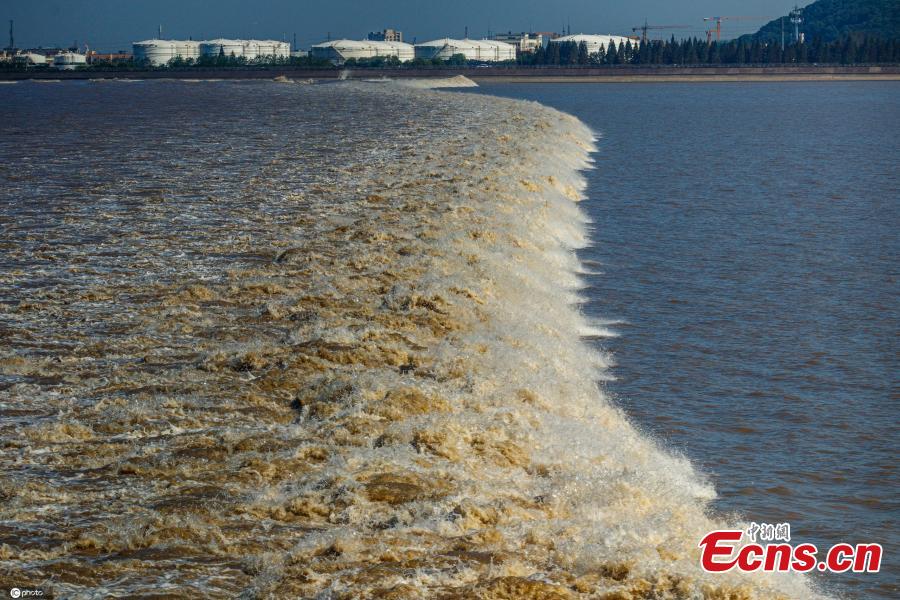
The annual tidal bores occur in Qiantang River in Hangzhou City, east China's Zhejiang Province, Sept. 23, 2021. (Photo/IC)
The tidal bores fell on the Autumn Equinox this year, when the gravitational pull from the sun and the moon aligned and peaked to make the tides powerful. The narrow flared-shaped estuary and straight riverbed provides geological conditions for the spectacular scenery of Yixianchao (a thread breadth to the tide).
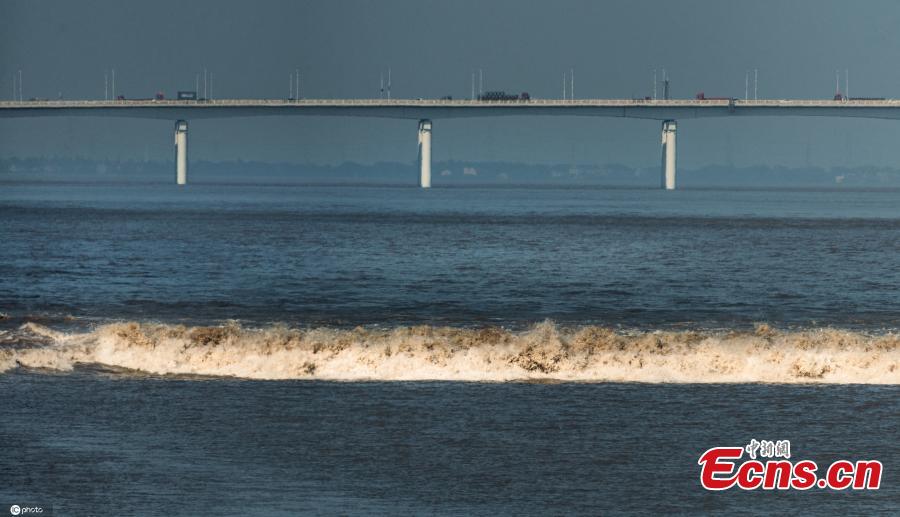
The annual tidal bores occur in Qiantang River in Hangzhou City, east China's Zhejiang Province, Sept. 23, 2021. (Photo/IC)
The tidal bores fell on the Autumn Equinox this year, when the gravitational pull from the sun and the moon aligned and peaked to make the tides powerful. The narrow flared-shaped estuary and straight riverbed provides geological conditions for the spectacular scenery of Yixianchao (a thread breadth to the tide).
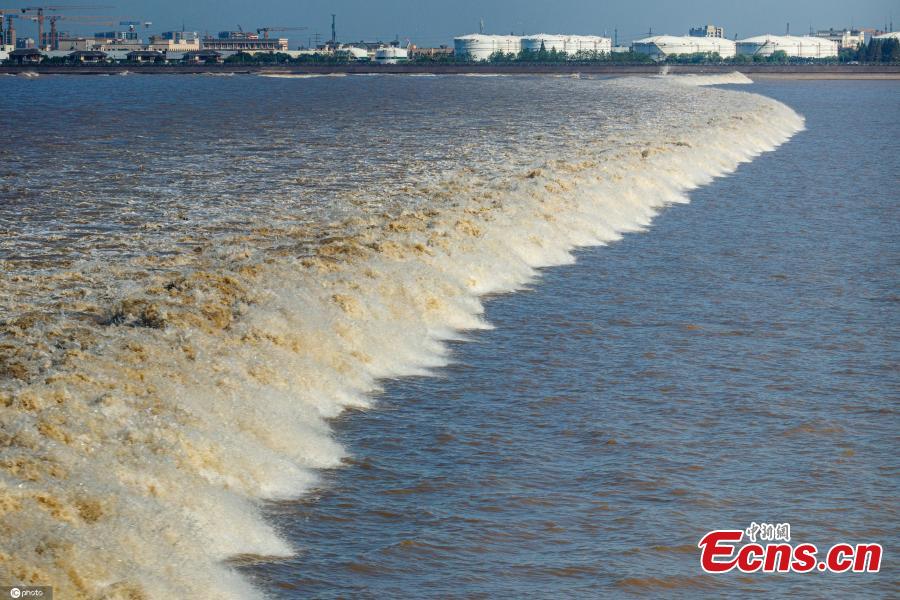
The annual tidal bores occur in Qiantang River in Hangzhou City, east China's Zhejiang Province, Sept. 23, 2021. (Photo/IC)
The tidal bores fell on the Autumn Equinox this year, when the gravitational pull from the sun and the moon aligned and peaked to make the tides powerful. The narrow flared-shaped estuary and straight riverbed provides geological conditions for the spectacular scenery of Yixianchao (a thread breadth to the tide).











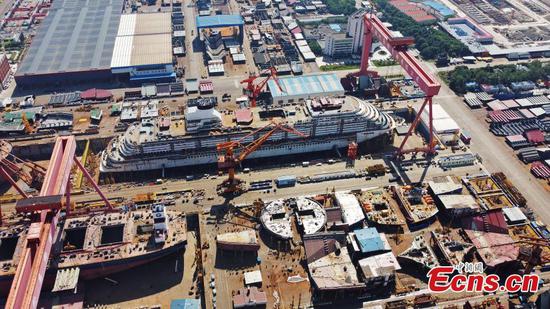
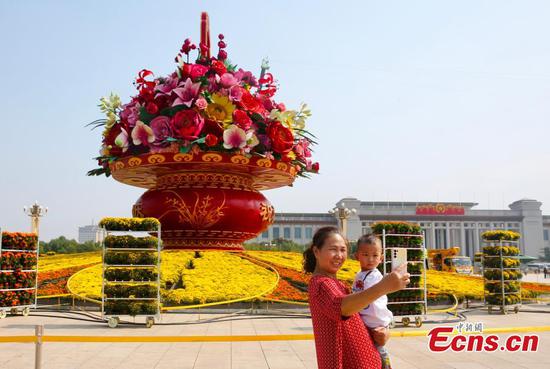






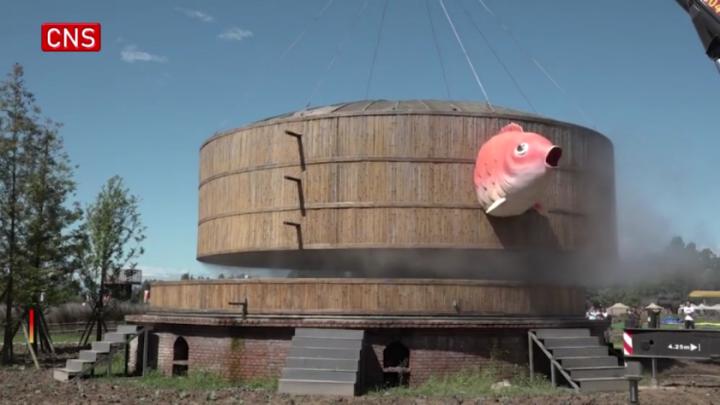



 京公网安备 11010202009201号
京公网安备 11010202009201号